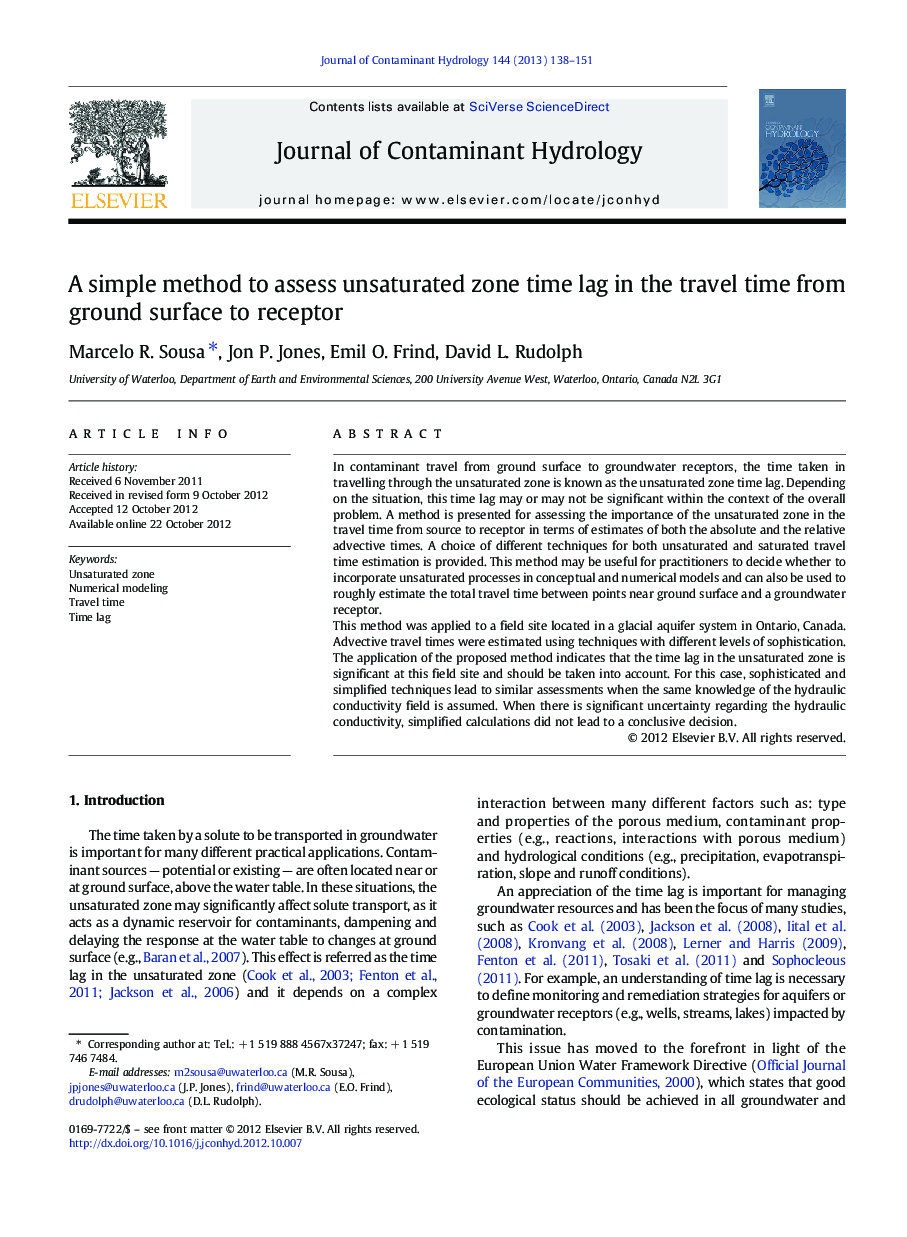| Article ID | Journal | Published Year | Pages | File Type |
|---|---|---|---|---|
| 4546727 | Journal of Contaminant Hydrology | 2013 | 14 Pages |
In contaminant travel from ground surface to groundwater receptors, the time taken in travelling through the unsaturated zone is known as the unsaturated zone time lag. Depending on the situation, this time lag may or may not be significant within the context of the overall problem. A method is presented for assessing the importance of the unsaturated zone in the travel time from source to receptor in terms of estimates of both the absolute and the relative advective times. A choice of different techniques for both unsaturated and saturated travel time estimation is provided. This method may be useful for practitioners to decide whether to incorporate unsaturated processes in conceptual and numerical models and can also be used to roughly estimate the total travel time between points near ground surface and a groundwater receptor.This method was applied to a field site located in a glacial aquifer system in Ontario, Canada. Advective travel times were estimated using techniques with different levels of sophistication. The application of the proposed method indicates that the time lag in the unsaturated zone is significant at this field site and should be taken into account. For this case, sophisticated and simplified techniques lead to similar assessments when the same knowledge of the hydraulic conductivity field is assumed. When there is significant uncertainty regarding the hydraulic conductivity, simplified calculations did not lead to a conclusive decision.
► A method to decide whether to incorporate unsaturated processes in models is proposed ► In a case study, the method showed the unsaturated zone travel time to be significant ► Simplified techniques to calculate travel times can be useful in some situations
